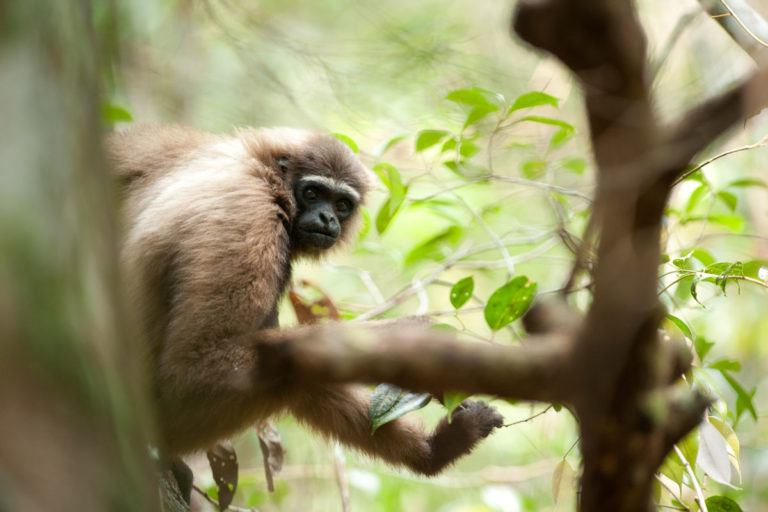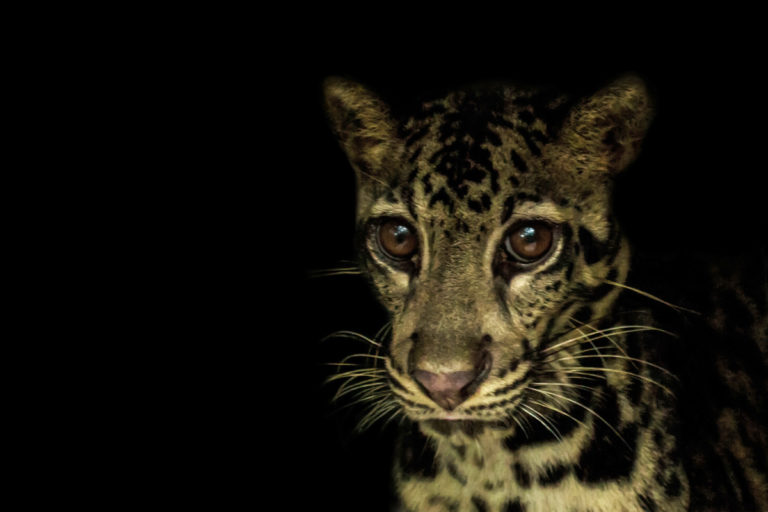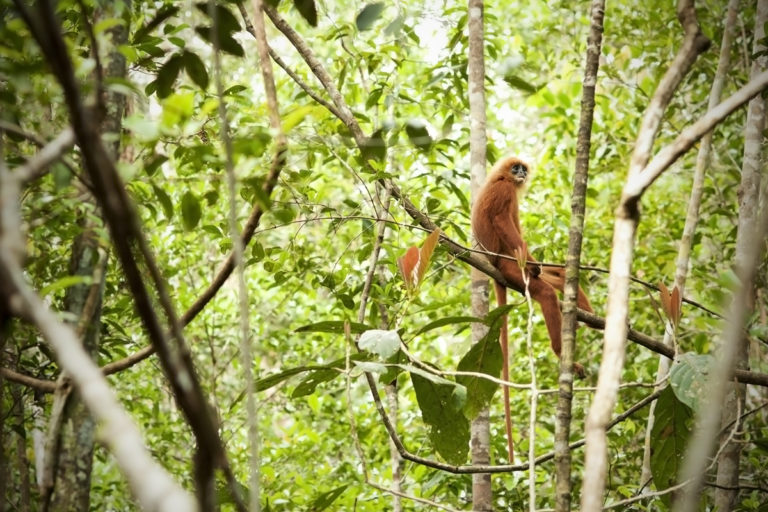- A field team with the Borneo Nature Foundation (BNF) was in the Sabangau Forest of Central Kalimantan in Indonesian Borneo studying wild Maroon Langur monkeys (Presbytis rubicunda) as part of a long-term behavioral research project when they witnessed the rare phenomenon, known as “predator mobbing,” first-hand.
- The monkeys responded after a group of Endangered Bornean White-bearded Gibbons (Hylobates albibarbis) started making alarm calls upon discovering a Sunda Clouded Leopard (Neofelis diardi) hiding in their midst.
- The two primate species then proceeded to continuously issue warning calls for over two-and-a-half hours in the direction of tangled lianas in the forest canopy in which the leopard was hiding — a cooperative, multi-species interaction that is incredibly unusual for researchers to observe in the wild.
Researchers say that a rare wildlife interaction that they caught on film in the rainforests of Borneo shows cooperation between prey species can be a key survival tool in the animal kingdom.
A field team with the Borneo Nature Foundation (BNF) was in the Sabangau Forest of Central Kalimantan in Indonesian Borneo studying wild Maroon Langur monkeys (Presbytis rubicunda) as part of a long-term behavioral research project when they witnessed the rare phenomenon, known as “predator mobbing,” first-hand.
“Anti-predatory interspecific communication is observed between cohabiting species, as well as between prey and predator to communicate detection of ‘stealthy hunters’,” the BNF team writes in an article describing the interaction published by the Asian Primates Journal, a publication of the IUCN Species Survival Commission’s Primate Specialist Group. “Predator mobbing is an extension of this communication, with prey species approaching and investigating or harassing a predator” until it abandons its hunt and leaves the area.

The monkeys responded after a group of Endangered Bornean White-bearded Gibbons (Hylobates albibarbis) started making alarm calls upon discovering a Sunda Clouded Leopard (Neofelis diardi) hiding in their midst. The two primate species then proceeded to continuously issue warning calls for over two-and-a-half hours in the direction of tangled lianas in the forest canopy in which the leopard was hiding — a cooperative, multi-species interaction that is incredibly unusual for researchers to observe in the wild.
“Despite collecting over 10,000 hours of behavioural data during 12 years of research on the two primate species in the Sabangau Forest, this was the first time we have witnessed an interaction like this,” Susan Cheyne, an associate lecturer of primate conservation at Oxford Brookes University, co-director of BNF, and co-author of the article, said in a statement. “We normally see the gibbons, the more dominant species, chase the langurs away because occasionally they do compete for the same resources.”
According to Cheyne and team, a male gibbon stayed within two meters of the leopard throughout the interaction, while a male langur stayed approximately 10 meters away. Females and younger animals of both species kept themselves even further from the leopard, in an adjacent tree, but directed their vocalizations towards the predatory cat as well. The leopard did not move throughout the more than two-hour encounter, though it was alert the entire time.
The male gibbon even went and pulled the leopard’s tail at one point, as can be seen in the video below. The gibbons eventually left the scene, while the langurs continued to sound the alarm. You can watch all the drama unfold right here:
A six-month old infant gibbon that was last seen some three weeks before this extraordinary interaction was caught on tape might have been the cause of the uproar, according to the researchers. The infant was not observed during the encounter with the leopard, and has not been seen since. One theory for why the predator mobbing occurred was that the leopard had perhaps predated upon the infant gibbon.
Another theory formulated by the BNF team is that the leopard, being naturally nocturnal, was simply having a snooze when it was discovered in the canopy by the gibbons. Either way, the two primate species put themselves at considerable risk by confronting the predator in such a manner, but Cheyne said that, in the end, it was to the benefit of both species that they ganged up on the leopard.
Scientists often look at primate behavior in order to try and shed light on the evolution of Homo sapiens, and the BNF team said that one thing we can learn from this episode is that cooperation and strength in numbers can be an effective means for deterring a dangerous threat.
“We do not know for certain if this clouded leopard predated on the infant gibbon,” Cheyne said. “But if the gibbons and langurs did not work to defend themselves against this predator then we may have seen more casualties.”


CITATION
- Wilcox, C. H., et al. (2017). Predator mobbing and Interspecies cooperation: An Interaction Between Gibbons, Langurs and a Clouded Leopard. Asian Primates Journal.
FEEDBACK: Use this form to send a message to the author of this post. If you want to post a public comment, you can do that at the bottom of the page.
